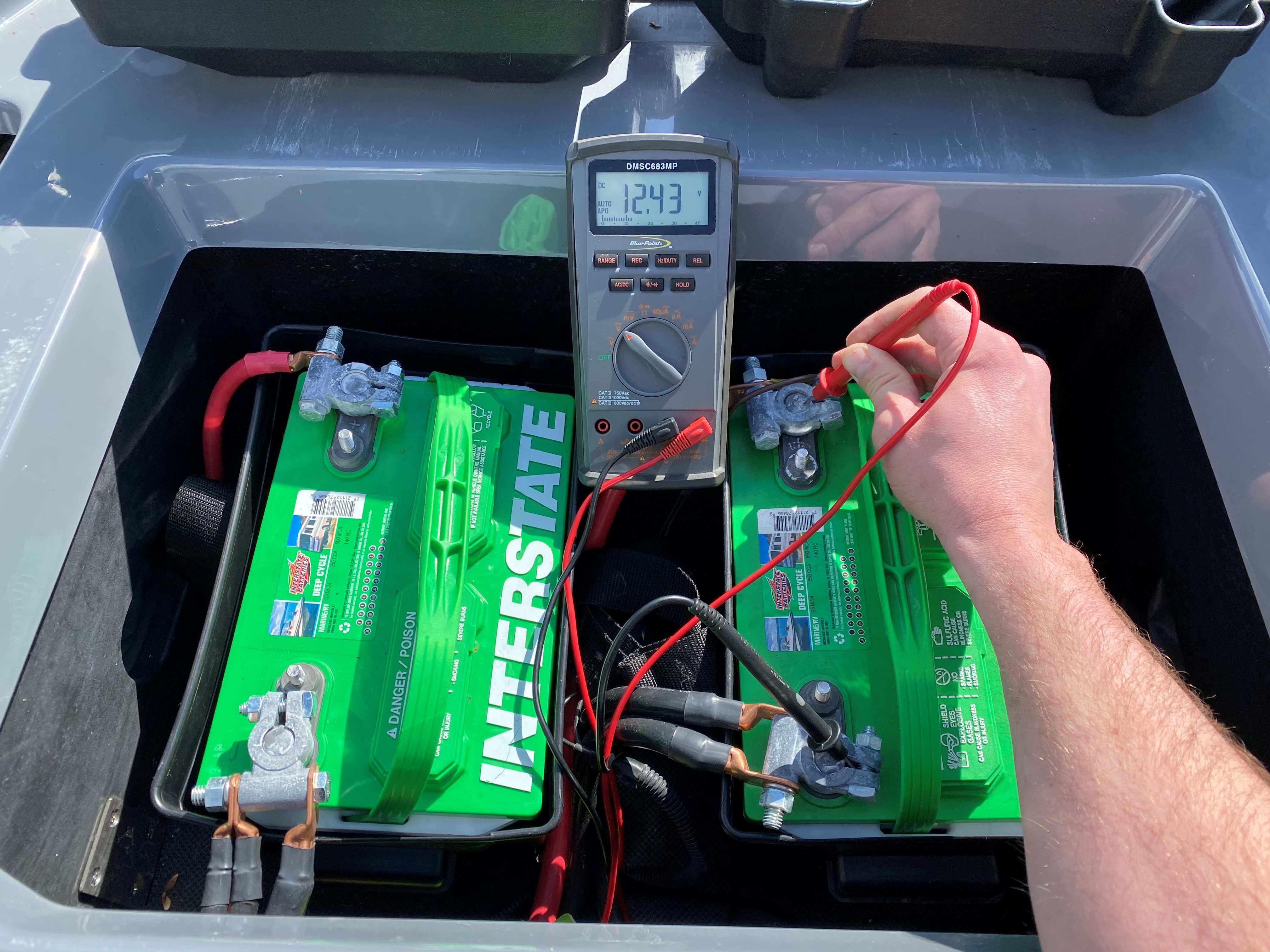dual battery system
-
Posted: February 22, 2021Categories: How to Fix & DiagnoseRead more »
Electrical Troubleshooting 101
Troubleshooting electrical problems in your boat can be a frustrating task, but it does not have to be if you keep a few simple rules in mind: Every circuit needs a power source; most electrical devices require a minimum voltage to function correctly, and all circuits require continuity. Consequently, most electrical problems are caused by low voltage (or no voltage), excessive resistance, or a loss of continuity.
1. What is the battery voltage?
Check battery voltage directly at the battery terminals. A fully charged battery should show around 12.5-12.7 volts. Perform a load test with a battery load tester to make sure there is not a bad or week cell in the battery.2. Have you loosened, wiggled, and re-tightened the battery cables at the battery and engine?
Even though a battery cable connection may seem tight or clean, corrosion or even paint can cause a bad connection and can cause a loss of power or ground when put under a load. It's also a good idea to fully remove cables and clean connections.3. Have you checked the positive and ground cables at the breaker panel bus bar?
Be sure these connections are tight and also clean. Loosen the connections and re-tighten to ensure a good connection. They may appear tight because they are wire-tied snug but may be loose at the connection.4. Have you checked the corresponding breaker at the breaker panel?
The breaker may appear as though it is not tripped but may actually be bad. Remove the breaker and perform a continuity test. Also, check the connections/sockets in the breaker panel. Some connections can become loose and make poor contact causing the contacts to arc and have an intermittent connection or loose connection altogether.5. Have you checked for power and ground at the corresponding PDM?
Check the red and black wires that plug



